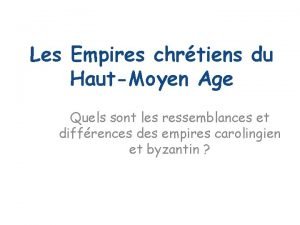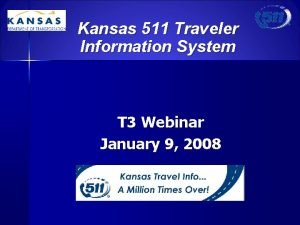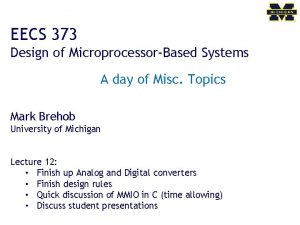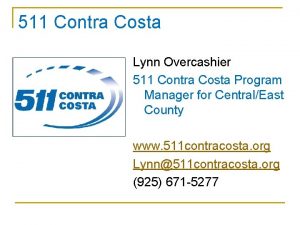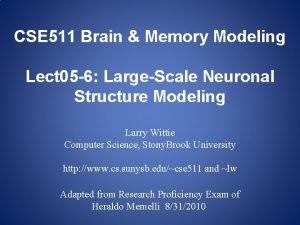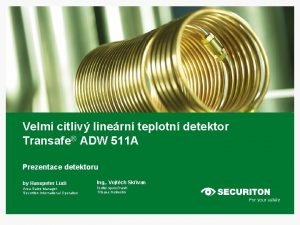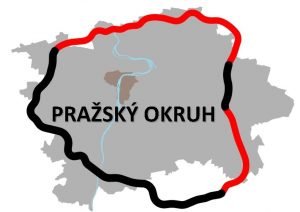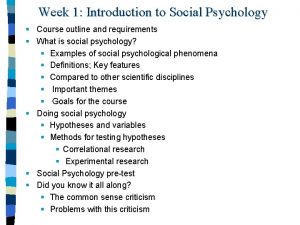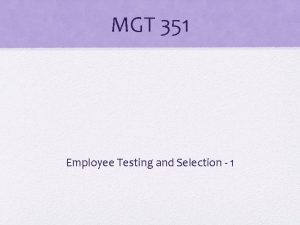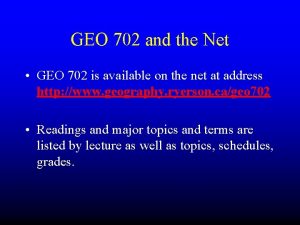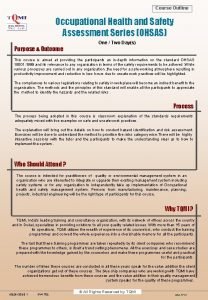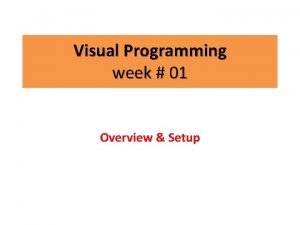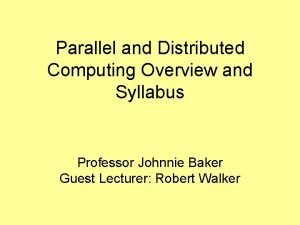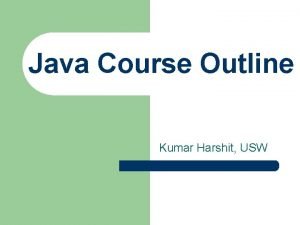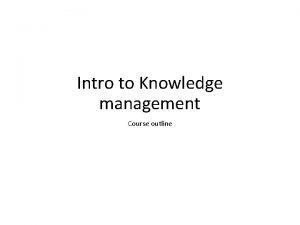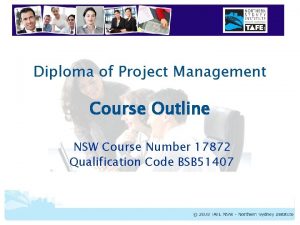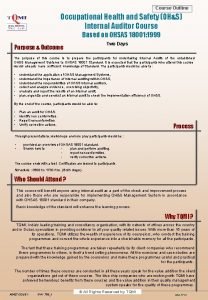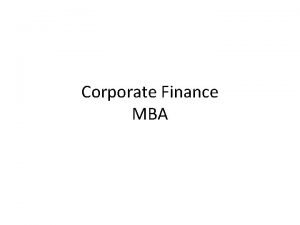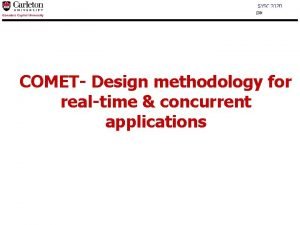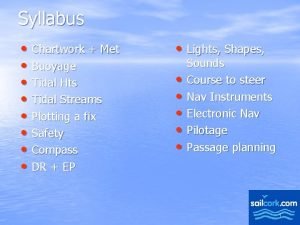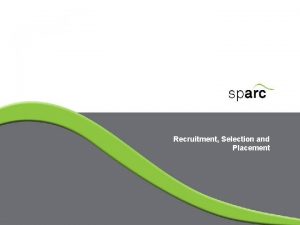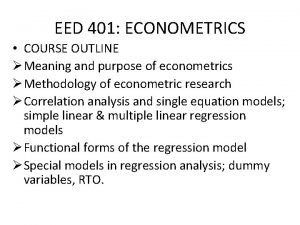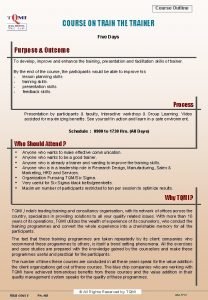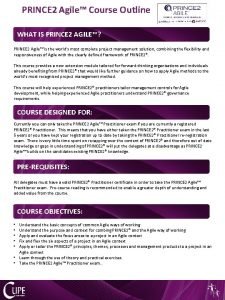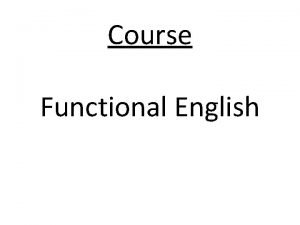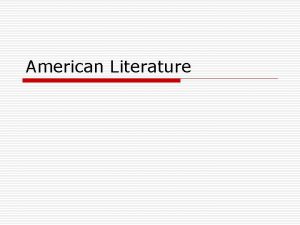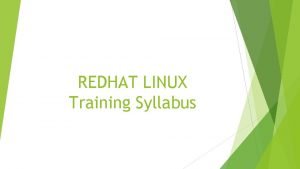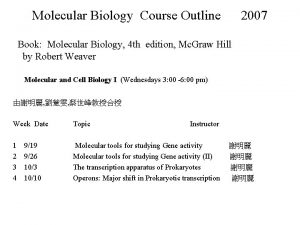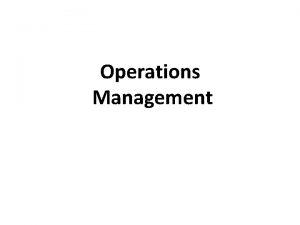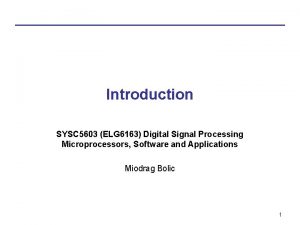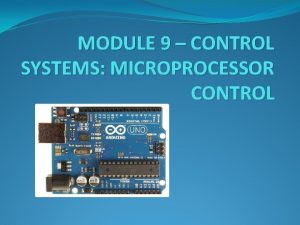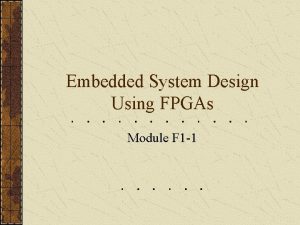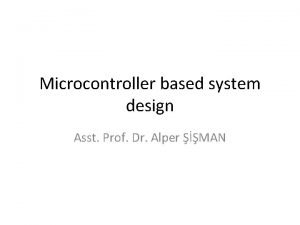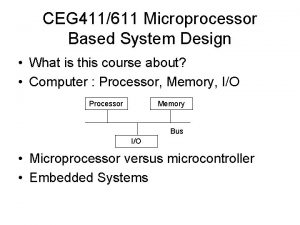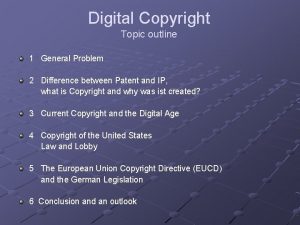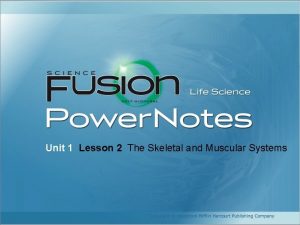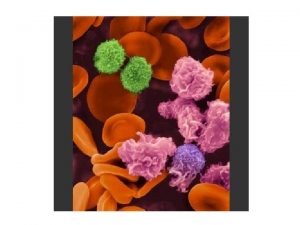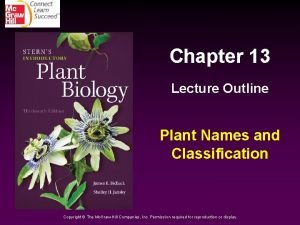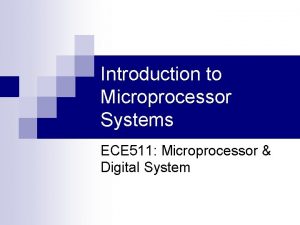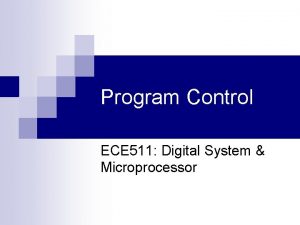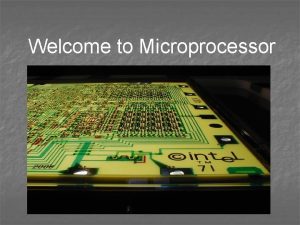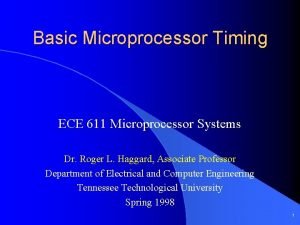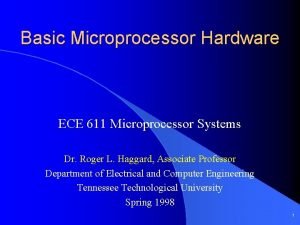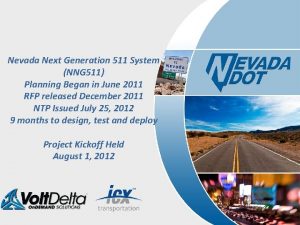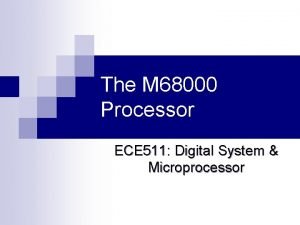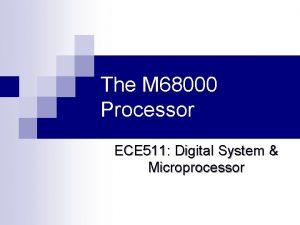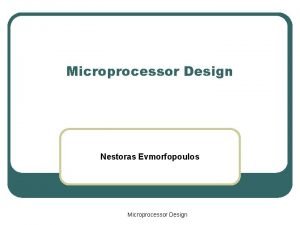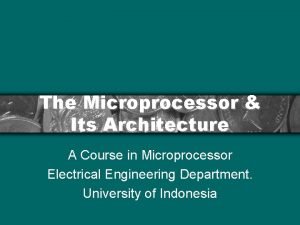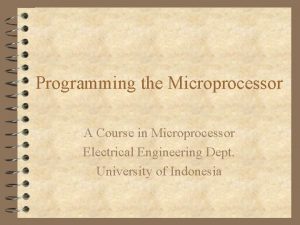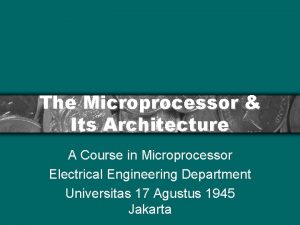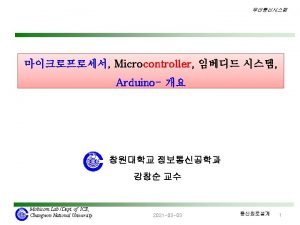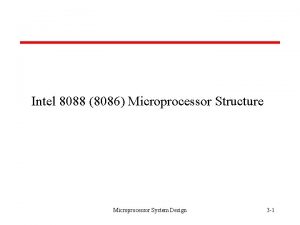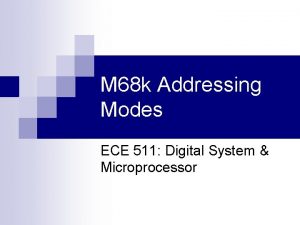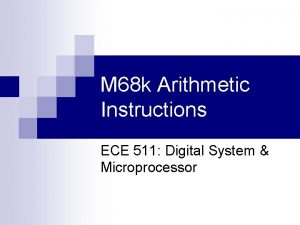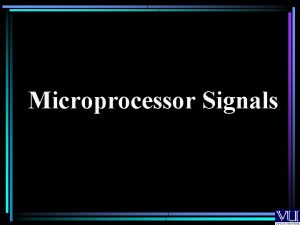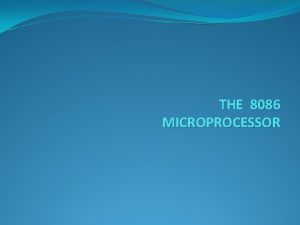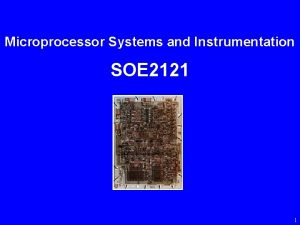ECE 511 Digital System Microprocessor Course Outline Week































































- Slides: 63

ECE 511: Digital System & Microprocessor

Course Outline Week Subject W 1 Digital Logic Review W 2 -W 3 Microprocessor Architecture & Overview W 3 -W 6 Microprocessor Instruction Set & Programming W 7 -W 9 Memory Interfacing W 10 -W 12 Parallel I/O Interfacing

References n n n J. L. Antonakos, “The 68000 Microprocessor: Hardware and Software Principles & Applications, ” 5 th Ed. , Pearson Prentice-Hall, 2004. C. M. Gilmore, “Microprocessors: Principles & Applications, ” 2 nd Ed. , Mc. Graw-Hill, 1995. A. Clements, “Microprocessor System Design, ” PWS-Kent, 1992.

Course Evaluation Tests x 2 n Quizzes x 3 n Mini Projects n 30% 20% 50%

If you have problems, please contact me: Ahmad Ihsan bin Mohd Yassin Rm. T 2 -A 13 -1 A, Dept. of Comp. Eng. Faculty of Elect. Eng. Ui. TM, Shah Alam. 03 -55436118, 017 -2576295 *Please call before you see me.

Digital Logic Review: Part I ECE 511: Digital System & Microprocessor.

What we will learn in this session: Review of logic gates. n Flip-flops. n Decoders. n Universal representation of logic gates. n

Gates

What are gates? n Gates are: ¨ Simple electronic devices. ¨ Constructed using transistors. ¨ Used to design digital systems. n Three Basic Gates: ¨ AND ¨ OR ¨ NOT n n Basic Gates can be combined into Extended Gates. Usually packed into ICs.

Gates as Building Blocks

Basic Gate - AND n The AND gate is similar to multiply operation. A AND C B TRUTH TABLE A B C 0 0 0 1 0 1 1 1

Basic Gate - OR n The OR gate is similar to add operation. A OR B C TRUTH TABLE A B C 0 0 0 1 0 1 1 1

Basic Gate - NOT n The NOT gate performs the inverse operation. A NOT B TRUTH TABLE A B 0 1 1 0

Extended Gates n Combination of basic gates to perform complex functions: ¨ NAND ¨ NOR ¨ XNOR ¨ Flip-Flops

NAND Gate n n Adds NOT after AND gate. AND outputs are inverted NAND (NOT-AND). A A AND B NOT C NAND C B TRUTH TABLE A B C 0 0 1 1 0

NOR Gate n n Adds NOT after OR gate. OR outputs are inverted NOR (NOT-OR). A A OR B NOT C NOR C B TRUTH TABLE A B C 0 0 1 1 0

XOR Gate n n XOR performs the Exclusive Or operation. When A=B, C=0; when A≠B, C=1. A B XOR C TRUTH TABLE A B C 0 0 0 1 0 1 1 0

XNOR Gate n n Adds NOT after XOR gate. XOR outputs inverted XNOR (NOT XOR). A A B XOR NOT C B XOR C TRUTH TABLE A B C 0 0 1 1 0 0 0 1 1 1

Flip-Flops

Flip-Flops n An extended gate used as memory: ¨ Each FF stores 1 bit. 2 gates, feedback connections. n 2 inputs, 2 outputs. n More complex ones may: n ¨ Use timing from CLK. ¨ Perform bit toggle.

Reset-Set (RS) Flip-Flop n 4 states: ¨ Three stable (Set, Reset, and Keep). ¨ One not stable (Unused). n n 2 inputs, 2 outputs. May also contain clock (CLK) signal.

RS Flip-Flop R Q *Assuming initial condition: S = 0, R = 0, Q = 0 RSFF S Q’ Qprev S R Q Q’ N/A 0 0 0 1 SET: Output set (Q = 1) 0 1 0 RESET: Output reset (Q = 0) 1 0 1 Doesn’t matter 1 1 N/A KEEP: Output unchanged *As long as S=0 and R=0, Q will always remain at previous state. Unstable

Clocked RS Flip-Flop R CLK Q *Assuming initial condition: S = 0, R = 0, Q = 0 RSFF S Q’ KEEP: Output unchanged Qprev S R CLK Q Q’ N/A 0 0 0 Only active when CLK is ↑ Reduced sensitivity to noise. Doesn’t matter ↑ 0 1 ↓ 0 1 SET: Output set (Q = 1) 0 1 0 ↑ 1 0 RESET: Output reset (Q = 0) 1 0 1 ↑ 0 1 Doesn’t matter 1 1 ↑ N/A Unstable

JK Flip-Flop Same as RS, but forbidden state used to toggle bit. n Can also be clocked using CLK. n *Assuming initial condition: J = 0, K = 0, Q = 0 Qprev J K Q Q’ Output unchanged N/A 0 0 0 1 Output set (Q = 1) 0 1 0 Output reset (Q = 0) 1 0 1 Q 1 1 Q Q Toggle

JK Flip-Flop J Q K Q *Assuming initial condition: J = 0, K = 0, Q = 0 Qprev S R Q Q’ Output unchanged N/A 0 0 0 1 Output set (Q = 1) 0 1 0 Output reset (Q = 0) 1 0 1 Q 1 1 Q Q Toggle

Clocked JK J Q CLK K Q Output unchanged Qprev S R CLK Q N/A 0 0 0 Doesn’t matter ↑ 0 ↓ 0 Only active when CLK is ↑ Output set (Q = 1) 0 1 0 ↑ 1 Reduced sensitivity to noise. Output reset (Q = 0) 1 0 1 ↑ 0 Q 1 1 ↑ Q Toggle

D-Flip-Flop Data latch. n Modification of RSFF. n Stores 1 -bit of information. n ¨ Can n be combined to store more. Data are stored in memory using millions of DFFs.

D-Flip-Flop D Q DFF EN Q’ Qprev *Only active when EN is 1 D EN Q Q’ QPREV Doesn’t Matter 0 Output set (Q = 1) Doesn’t Matter 1 1 1 0 Output reset (Q = 0) Doesn’t Matter 0 1 QPREV Q’PREV

D-Flip-Flop: Timing Diagram D EN Q

Storing 8 -bits using DFF (RAM) Data Bus D 0 D 1 D 2 D 3 D 4 D 5 D 6 D 7 DFF DFF Q 0 Q 1 Q 2 Q 3 Q 4 Q 5 Q 6 Q 7 EN

Asynchronous Latch n Allows both synchronous & asynchronous operations: ¨ Synchronous: CLK driven (Clocked JK). ¨ Asynchronous: similar to RSFF. n 5 inputs, 2 outputs: ¨ J, K and CLK for synch. operation. ¨ PR, CLR for asynch. operation.

Asynchronous Latch PRE(S) J Q CLK K Q CLR(R) PRE 0 0 1 1 CLR 0 1 Q Follows J, K, CLK (Synch. JK) Q = 0, resets output. Q = 1, sets output. Not valid.

Universal Gates – NAND and NOR

NAND and NOR as Universal Gates In industry, NAND and NOR gates are most common. n Reason? n ¨ Can be used to represent any gate (functionally complete). ¨ Easiest & cheapest to produce.

NAND Logic

NAND Logic

NOR Logic

NOR Logic

IC 4011 IC 7402

Decoders

Decoder n n A digital circuit that detects a specific combination of input bits (code), and indicates the presence of the code by a specific output. Typically has n inputs and 2 n outputs, but other combinations also exist. However, the number of inputs is always less than the outputs (no. Inputs < no. Outputs). Each combination of inputs will generate a unique pattern at the output.

Example: Active High 2 -4 Decoder I 0 I 1 Y 0 2 -4 Decoder Y 1 Y 2 Y 3 I 1 I 0 Y 3 Y 2 Y 1 Y 0 0 0 1 0 1 0 0 1 1 1 0 0 0 A specific pattern at the inputs. Will activate a specific bit at the outputs.

Example: Active Low 2 -4 Decoder I 0 I 1 Y’ 0 2 -4 Decoder Y’ 1 Y’ 2 Y’ 3 I 1 I 0 Y’ 3 Y’ 2 Y’ 1 Y’ 0 0 0 1 1 1 0 1 1 0 1 1 1 A specific pattern at the inputs. Will activate a specific bit at the outputs.

Example: Active High 3 -8 Decoder A B C Y 7 Y 6 Y 5 Y 4 Y 3 Y 2 Y 1 Y 0 0 0 1 0 0 0 0 0 0 1 1 0 0 0 0 0 1 0 0 1 0 0 0 1 1 0 0 0 0

Example: Active Low 3 -8 Decoder A B C Y 7’ Y 6’ Y 5’ Y 4’ Y 3’ Y 2’ Y 1’ Y 0’ 0 0 0 1 1 1 1 0 1 0 1 1 1 1 0 0 1 1 1 1 1 1 1 0 1 1 1 1

Encoder vs. Decoder 8 3 Encoder I 0 I 1 I 2 I 3 I 4 I 5 I 6 I 7 I 0 1 0 0 0 0 I 1 0 0 0 0 Y 2 Y 1 Y 0 I 2 0 0 1 0 0 0 I 3 0 0 0 1 0 0 I 4 0 0 1 0 0 0 I 5 0 0 0 1 0 0 I 6 0 0 0 1 0 I 7 0 0 0 0 1 Y 0 0 0 1 1 Y 1 0 0 1 1 Y 2 0 1 0 1

Encoder vs. Decoder 3 8 Decoder I 0 I 1 I 2 I 3 I 4 I 5 I 6 I 7 Y 2 Y 1 Y 0 0 0 1 1 Y 1 0 0 1 1 Y 2 0 1 0 1 I 0 0 0 0 1 I 1 0 0 0 1 0 I 2 0 0 0 1 0 0 I 3 0 0 1 0 0 0 I 4 0 0 0 1 0 0 I 5 0 0 1 0 0 0 I 6 0 1 0 0 0 I 7 1 0 0 0 0

What Goes on Inside a Decoder? Y 0 Y 1 I 0 = Y 0 Y 1 Y 2 I 1 = Y 0 Y 1 Y 2 I 2 = Y 0 Y 1 Y 2 I 3 = Y 0 Y 1 Y 2 I 4 = Y 0 Y 1 Y 2 I 5 = Y 0 Y 1 Y 2 I 6 = Y 0 Y 1 Y 2 I 7 = Y 0 Y 1 Y 2

Decoders n In this subject, you need to familiarize yourself with two types of decoders: ¨ 74 LS 139 Dual 2 -4 Line Decoder. ¨ 74 LS 138 3 -8 Line Decoder n Decoders are used to: ¨ Activate devices for use by µP. ¨ Memory, I/O interfacing.

74 LS 139 Dual 2 -4 Line Decoder Motorola active low 2 -4 decoder. n 2 x decoders in one IC. n 16 pins total: n ¨ 2 x (2 inputs, 4 outputs). ¨ Vcc (± 5 V) and GND. ¨ 2 x Enable pins.

74 LS 139 Dual 2 -4 Line Decoder O 0 a Ea A 0 a A 1 a O 2 a O 3 a O 0 b Eb A 0 b A 1 b O 2 b O 3 b

74 LS 139 Truth Table E I 1 I 0 O 3 O 2 O 1 O 0 1 X X 1 1 0 0 0 1 1 1 0 1 0 1 1 1

74 LS 138 3 -8 Line Decoder Motorola 3 -8 active low decoder. n 1 x decoder in one IC. n 16 pins total: n ¨ 3 inputs, 8 outputs (active low). ¨ Vcc (± 5 V) and GND. ¨ 3 x Enable pins.

74 LS 138 3 -8 Line Decoder E 1 E 2 E 3 O 0 O 1 O 2 O 3 A 0 A 1 A 2 O 4 O 5 O 6 O 7

74 LS 138 Truth Table E 1 E 2 E 3 I 2 I 1 I 0 O 7 O 6 O 5 O 4 O 3 O 2 O 1 O 0 1 X X X 1 1 1 1 X 1 X X 1 1 1 1 X X 0 X X X 1 1 1 1 0 0 0 1 1 1 1 0 0 0 1 1 1 1 0 1 0 1 0 1 1 0 0 1 1 1 1 0 0 1 1 1 0 0 1 1 1 0 1 1 1 0 0 1 1 1 1

Conclusion

Conclusion Gates: most basic elements in circuits. n Gates can be extended to perform advanced functions. n Some types are universal (NAND, NOR). n

Conclusion n Flip-flops can store data – feedback: ¨ Can n store previous data. Decoders transform code into original signals. ¨ Used in memory interfacing (Chapter 4).

Tutorial

Tutorial Name three basic gates. n What are extended gates? What’s the difference between extended gates and basic gates? n What is the flip-flop used for? n

Tutorial Describe the RS, JK, D and Asynchronous flip-flops and draw the truth tables for them. n Why are NAND and NOR gates called universal gates? Why are they special? n

Tutorial Give the definition of decoder. n Draw the truth table of the 74 LS 138 and 74 LS 139 decoder. n

The End
 Week by week plans for documenting children's development
Week by week plans for documenting children's development Royaume de clovis en 511
Royaume de clovis en 511 Kansas 511
Kansas 511 Eecs 511
Eecs 511 511 contra costa
511 contra costa Pet 511 kev
Pet 511 kev 511
511 Goroo trip planner
Goroo trip planner Cse 511
Cse 511 Adw 511
Adw 511 Circulation 511
Circulation 511 Stavba 511
Stavba 511 Sokp 511
Sokp 511 Flavorful sentence
Flavorful sentence Sociocultural psychology examples
Sociocultural psychology examples Mgt 351 nsu course outline
Mgt 351 nsu course outline Geo702
Geo702 Occupational health and safety course outline
Occupational health and safety course outline Ai2.appinventor.mit.edu emulator
Ai2.appinventor.mit.edu emulator Parallel and distributed computing course outline
Parallel and distributed computing course outline Java course outline
Java course outline Knowledge management course outline
Knowledge management course outline Bsb51407
Bsb51407 Idmpakistan course outline
Idmpakistan course outline Occupational health and safety course outline
Occupational health and safety course outline Nisan langberg
Nisan langberg Phys1111 unsw course outline
Phys1111 unsw course outline Sysc 2004 course outline
Sysc 2004 course outline Hts course outline
Hts course outline Recruitment and selection course outline
Recruitment and selection course outline Course outline meaning
Course outline meaning Train the trainer training program outline
Train the trainer training program outline Agile course outline
Agile course outline Functional english course outline
Functional english course outline American literature course outline
American literature course outline Analytical thinking training course outline
Analytical thinking training course outline Rhcsa course outline
Rhcsa course outline Molecular biology course outline
Molecular biology course outline Software engineering 1 course outline
Software engineering 1 course outline Operation management course outline
Operation management course outline Signal processing development kit presentation
Signal processing development kit presentation T junction brick wall
T junction brick wall Course title and course number
Course title and course number Course interne course externe
Course interne course externe Microprocessor control system
Microprocessor control system Embedded microprocessor system design using fpgas
Embedded microprocessor system design using fpgas Microcontroller system design
Microcontroller system design Microprocessor system with bus organization
Microprocessor system with bus organization Microprocessor based system design
Microprocessor based system design What is a digital footprint
What is a digital footprint Digital topic outline
Digital topic outline Perbedaan warga digital dan kewargaan digital
Perbedaan warga digital dan kewargaan digital Digital markets and digital goods
Digital markets and digital goods Digital data digital signals
Digital data digital signals Digital data digital signals
Digital data digital signals E-commerce: digital markets, digital goods
E-commerce: digital markets, digital goods Digital encoding schemes
Digital encoding schemes Healthtech ecosystem
Healthtech ecosystem E-commerce digital markets digital goods
E-commerce digital markets digital goods Lesson 2 muscle storyboard
Lesson 2 muscle storyboard Lymphatic system lecture
Lymphatic system lecture Outline the binomial system of nomenclature
Outline the binomial system of nomenclature Course applicability system
Course applicability system Crash course cardiovascular system
Crash course cardiovascular system

